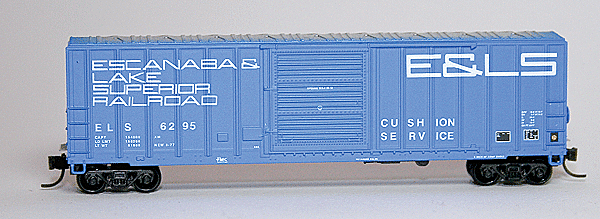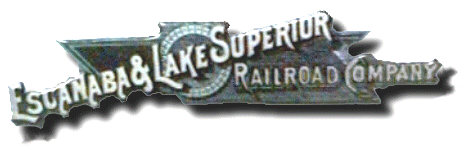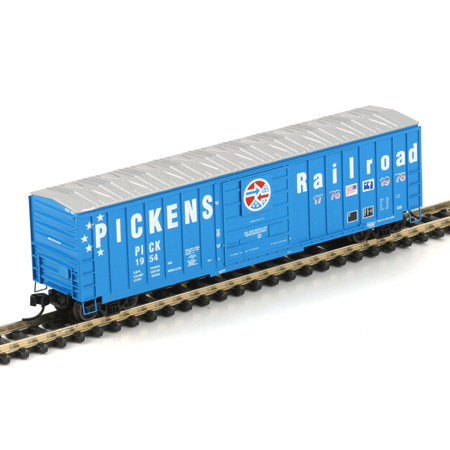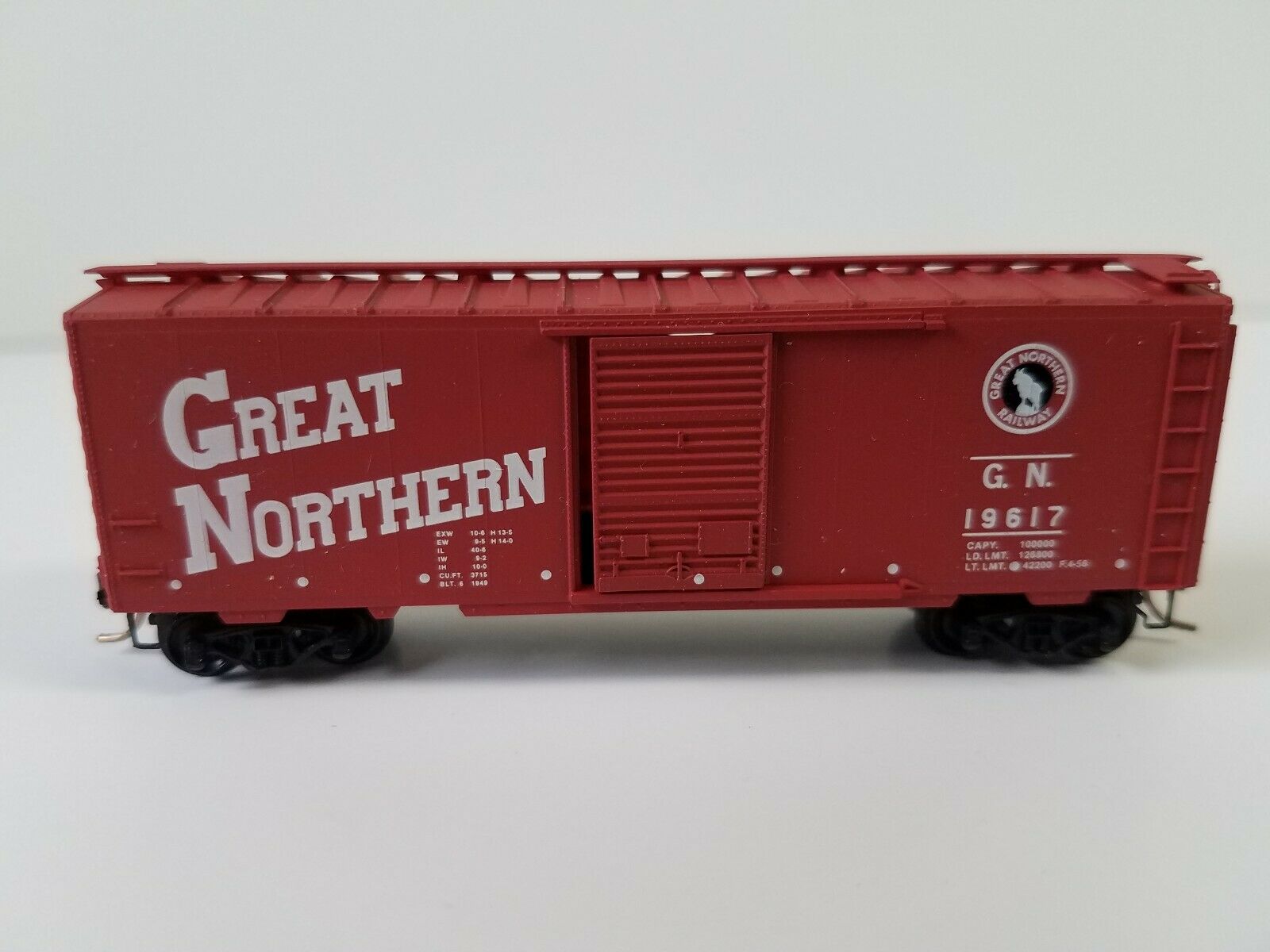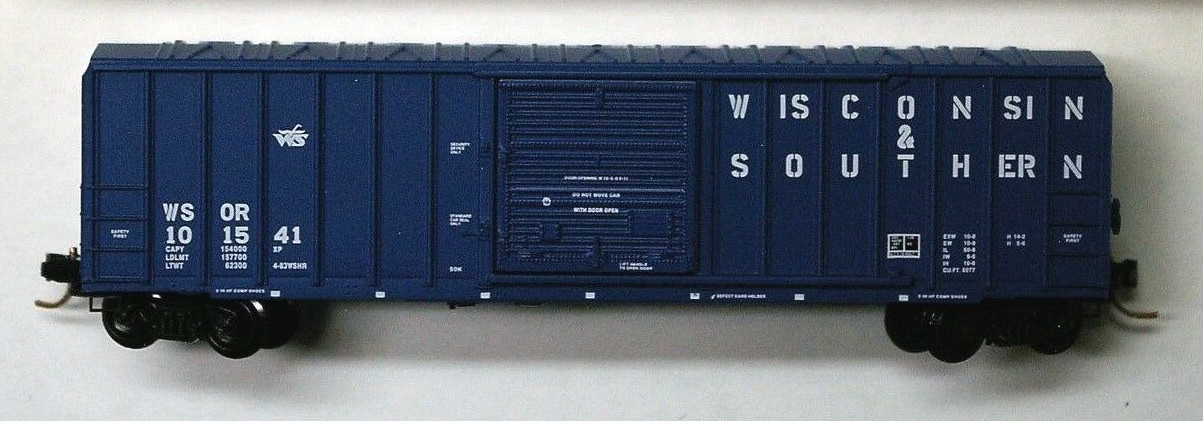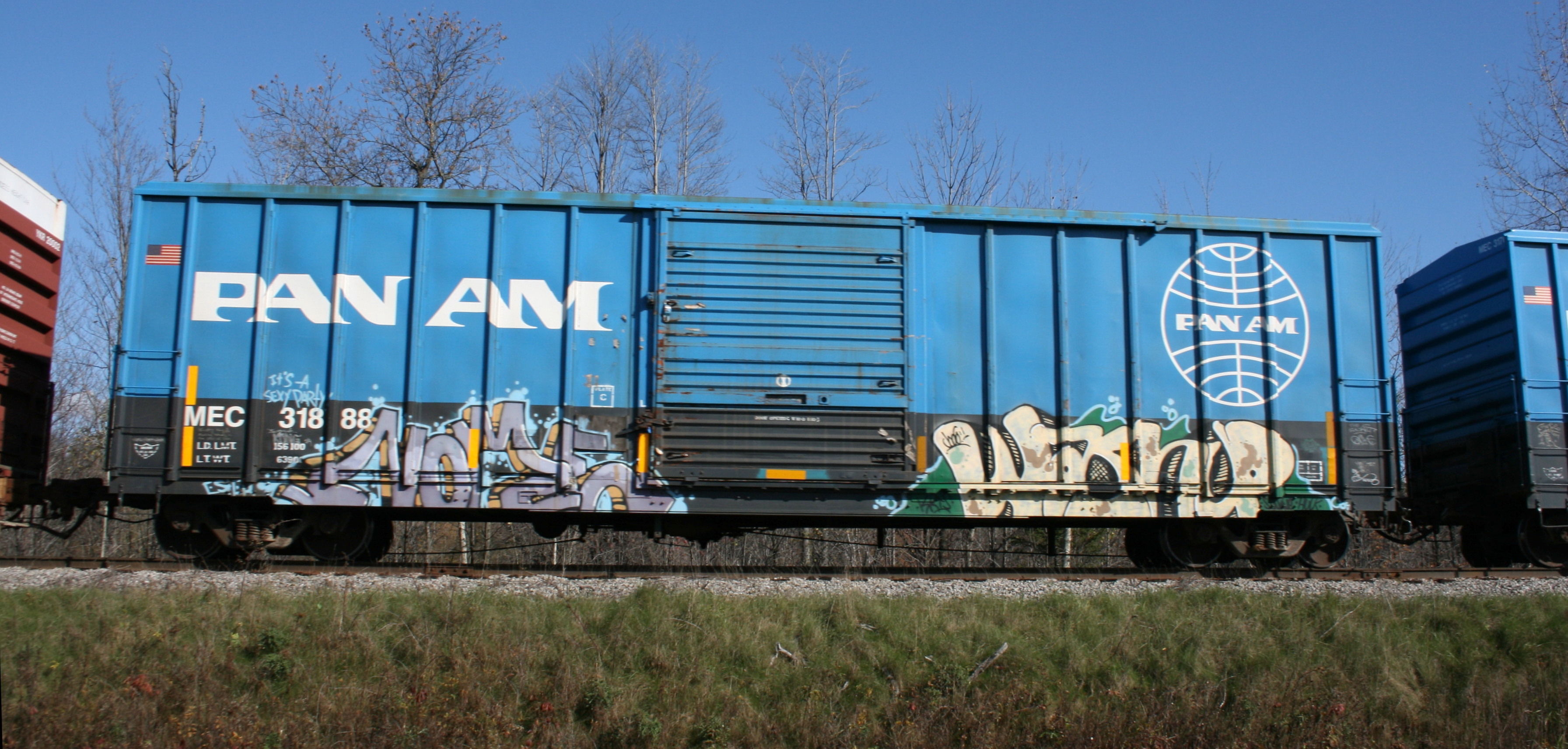Model Information: These Fox Valley models feature crisp print detail, sharp lettering, Micro-Train couplers and photo-etched walkways.
Prototype History: It was the mid 1970s, and the incentive per diem box car boom was just beginning. New, brightly painted box cars seemed to appear overnight. Many were lettered for various short lines. FMC (Food Machinery Corporation) was a significant builder of many of these cars. The 50’ outside post, non-terminating end box car, became the foundation for new per diem cars built in the 1970s. The 50’ FMC cars also varied in door configuration and style to better suit each customer. These cars can still be seen today at work (2017) on many ralroads.
The main difference between the 5077 cu. ft cars built by FMC vs the 5277-5347 cu. ft cars built by the same manufacturers is the overall height of the car, the smaller 5077 cars were Plate B while the larger 5277-5347 cars were Plate C.
The main difference between the 5077 cu. ft cars built by FMC vs the 5277-5347 cu. ft cars built by the same manufacturers is the overall height of the car, the smaller 5077 cars were Plate B while the larger 5277-5347 cars were Plate C.
Road Name History:
The E&LS was built in 1898 to link the harbor of Escanaba to a connection with the Milwaukee Road in Channing in Michigan’s Upper Peninsula. The mileage during this first period was about 68.
The E&LS dieselized with an all Baldwin fleet and the road would remain all-Baldwin until the expansion in 1980. That year, Milwaukee Road was in the process of spinning off lines left and right so the Escanaba & Lake Superior leased routes from Channing northwest to Ontonogon near the Minnesota border, and from Channing south to Green Bay, Wisconsin giving the system map a lopsided T shape. At this point the mileage was up to 325 miles. Four years later, E&LS bought those lines from Milwaukee Road (which was being sold to Soo at the time.) Secondhand EMD’s were brought in to help the aging fleet of Baldwins. By 1991, half the fleet was EMD and the other half Baldwin. In the last few years, E&LS obtained trackage rights on Canadian National to shorten the route for traffic between Escanaba and Green Bay.
The Baldwin fleet included the two former Delaware & Hudson RF16A shark nose units that had been railfan favorites in the Northeast in the 70s. Both sharks are still on the property but are stored out of sight. In the last couple of decades, E&LS had trouble with people stealing parts such as bells and builder plates from their increasingly rare Baldwins. This has made E&LS hostile to railfans so if you find yourself in this neck of the woods, stay well clear of E&LS property.
The E&LS dieselized with an all Baldwin fleet and the road would remain all-Baldwin until the expansion in 1980. That year, Milwaukee Road was in the process of spinning off lines left and right so the Escanaba & Lake Superior leased routes from Channing northwest to Ontonogon near the Minnesota border, and from Channing south to Green Bay, Wisconsin giving the system map a lopsided T shape. At this point the mileage was up to 325 miles. Four years later, E&LS bought those lines from Milwaukee Road (which was being sold to Soo at the time.) Secondhand EMD’s were brought in to help the aging fleet of Baldwins. By 1991, half the fleet was EMD and the other half Baldwin. In the last few years, E&LS obtained trackage rights on Canadian National to shorten the route for traffic between Escanaba and Green Bay.
The Baldwin fleet included the two former Delaware & Hudson RF16A shark nose units that had been railfan favorites in the Northeast in the 70s. Both sharks are still on the property but are stored out of sight. In the last couple of decades, E&LS had trouble with people stealing parts such as bells and builder plates from their increasingly rare Baldwins. This has made E&LS hostile to railfans so if you find yourself in this neck of the woods, stay well clear of E&LS property.
Brand/Importer Information: Fox Valley Models is a small supplier of
model railroad and related products. FVM
started by finding solutions to different
challenges that model railroaders were
faced with. Our first products resulted
from a need to equip custom built
passenger cars with tinted windows made
of an ideal material; thin, flexible, easy to
cut, simple to install, available in multiple
colors and be affordable. We met those
needs and even included a frosted
version for the car's lavatory windows.
Other challenges inspired additional products including wooden grade crossings, trestles and different lineside structures. As our product line expands, input and requests from friends and customers help shape the product selection further.
Future products, under development, include more parts, structures, details and rolling stock. We strive to offer a good quality product at an affordable price.
Other challenges inspired additional products including wooden grade crossings, trestles and different lineside structures. As our product line expands, input and requests from friends and customers help shape the product selection further.
Future products, under development, include more parts, structures, details and rolling stock. We strive to offer a good quality product at an affordable price.
Item created by: CNW400 on 2022-11-22 10:50:13
If you see errors or missing data in this entry, please feel free to log in and edit it. Anyone with a Gmail account can log in instantly.
If you see errors or missing data in this entry, please feel free to log in and edit it. Anyone with a Gmail account can log in instantly.


